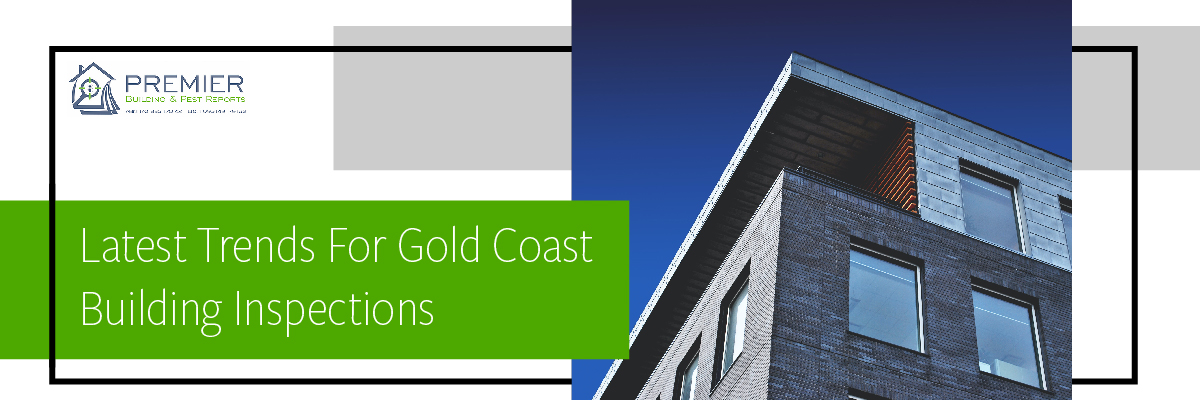It is essential to get a building inspection done if you want to detect potential damage and defects within your building. With the information gathered from a thorough building inspection report, you can establish risks and fix them accordingly. The methods used to conduct building inspections is continuously evolving with new and innovative measures. We’ve put together this article to share with you the latest trends on building inspections.
Some of the biggest trends in the building inspection industry have to be the technology that is now used to complete inspections to a higher standard than ever before. Some of these include:
Infrared Thermal Imaging Technology
Thermal imaging cameras are used in building inspections to detect heat emitted from objects and identify areas of damage that otherwise may have been missed with the naked eye. Thermal imaging enables even the smallest defect or damage to be discovered via a non-invasive and simple method. It is commonly used to detect issues such as:
- Shower and roof leaks – Leaks can cause significant structural damage if left untreated. Thermal imaging cameras can detect areas of moisture. In some instances, the homeowner has no idea that there is moisture behind their wall until thermal imaging is done. If undetected, mould can grow quite rapidly and can cause health issues. If you know there is a leak in your home even if it is small, its good idea to get it seen to as soon as possible to prevent it turning into a big problem that can potentially cost thousands of dollars to repair.
- Pests – Pests are notorious for hiding in small cracks and crevices. Thermal imaging is an effective and non-intrusive way to find pests such as rodents, hornets, and termite nests by detecting their body heat. This technology is used to locate nests quickly and remove them without having to use large doses of insecticides throughout the home.
- Identify gaps in insulation – This is a reliable way to determine if your insulation is up to standard. If not, you could experience excessive heat and cooling loss which can result in a rising energy bill. It can detect inferior areas of insulation that are letting in and out the warmth or cold. Some reasons why this occurs are underqualified installers, low-grade products used, and not installing the insulation correctly.
Moisture Meters
Moisture meters are used to measure the water content in materials. If moisture is built up within the structure of the home, it can compromise its safety and longevity. Signs that your home has high moisture levels include mould, leaks, and rot although sometimes there are no signs at all, and the homeowner is unaware of any underlying issues until a building inspection is done. Moisture meters are commonly used to detect moisture in the following materials:
- Drywall
- Insulation
- Roofing
- Tiles
- Timber
- Plaster
Borescopes
A Borescope is a piece of equipment that is commonly used in building inspections to detect mudding, moisture, and signs of termites. A tiny hole is placed in the wall to make room for a thin optical fibre. This gives the inspector a clear view of any activity or issues behind the wall quickly and effectively.
Termatrac
Termatrac is an innovative tool that is used to detect termite activity. It has radar, moisture, and thermal sensors all built-in one. The radar enables us to see exactly where the termites are coming from and to track their movements.
Laser levels
Building inspectors are using laser level applications to establish irregularities in all areas of the home. It can give precise measurements promptly.
There are a few different laser levels available and they commonly used to measure:
- The floor level
- Checking if walls, doors, and roofing are level
- Surveying the property
- Site layout
- Pipeworks, plumbing and tunnelling
- Measure distance between objects
If there are issues with your flooring or any structure in your home is uneven, the inspector will provide evidence and advice based on your situation.
Additional trends in the building inspection industry include:
Assessing potential risk with data analytics
Rather than physically completing a building inspection themselves, insurance companies are using analytical data for low-risk homes.
Mobile technology
New and innovative construction apps are hitting the market and they allow inspectors to conduct real-time inspections. They can measure areas with the use of the camera on a smartphone or device.
Extreme weather conditions
The last few years Australia has experienced extreme bouts of weather. from fires to floods. As a result, more building inspections are now being done. Some companies are experiencing staff shortages and to make building inspections more efficient they are using equipment such as drone technology.
Only use a professional to conduct your building inspection
A home is a substantial investment for many, so it is important that you hire someone who is qualified in building inspections to ensure that every area of your home is thoroughly inspected to a professional standard. A small detail missed now can turn into a big problem later on.
Our team here at Premier Building and Pest Reports are highly experienced and utilise the latest technology when coming to your property to assess your home. We include free thermal technology with every Gold Coat Building Inspection as this enables us to conduct the most comprehensive inspection to ensure that no detail is missed. For additional information or to speak to one of our friendly staff members, get in touch today.

